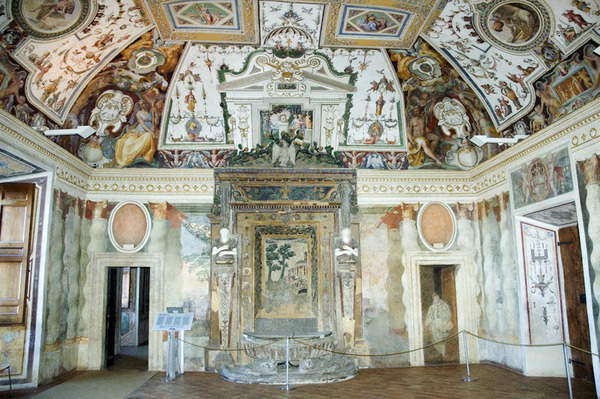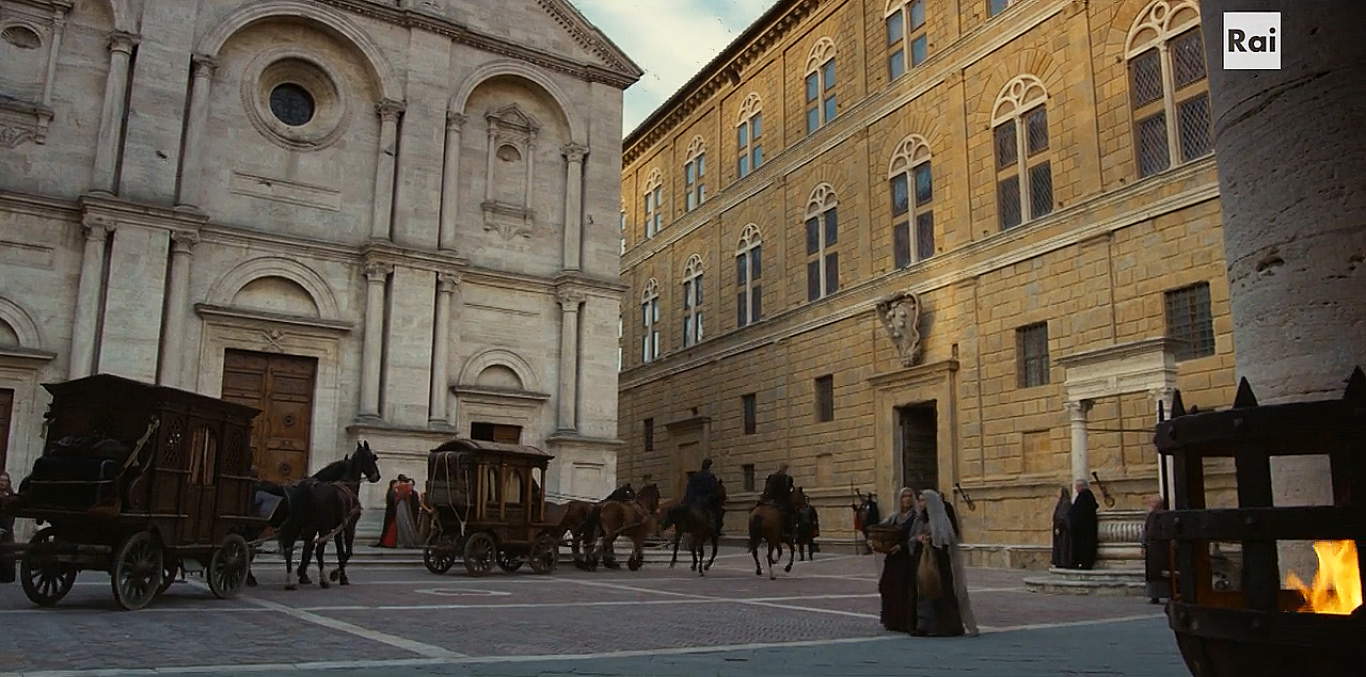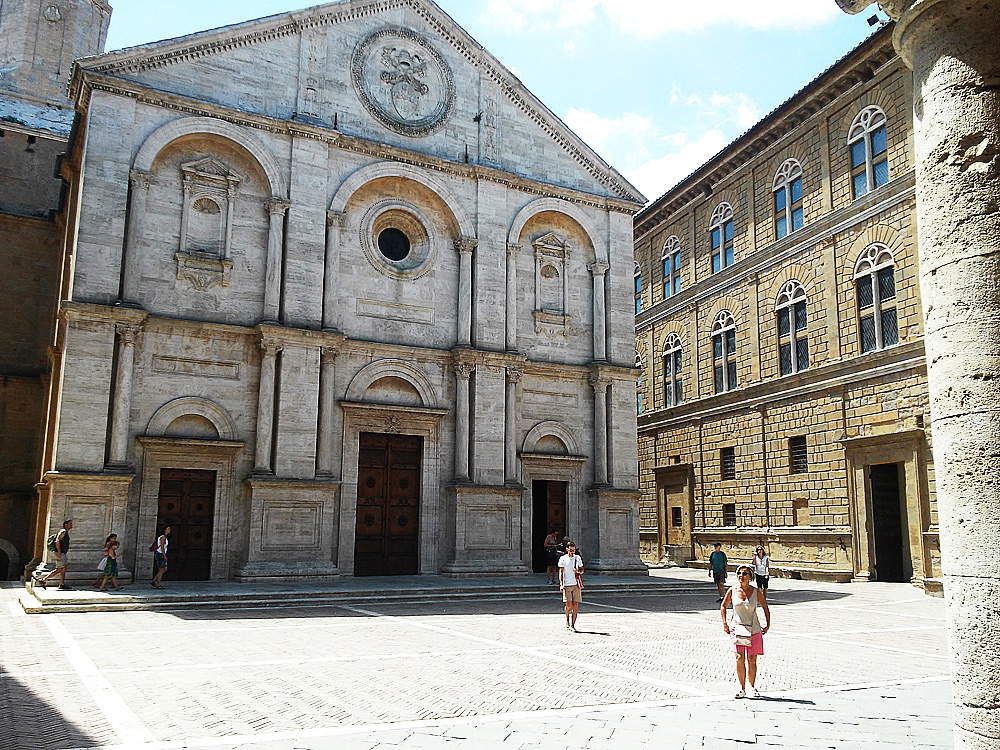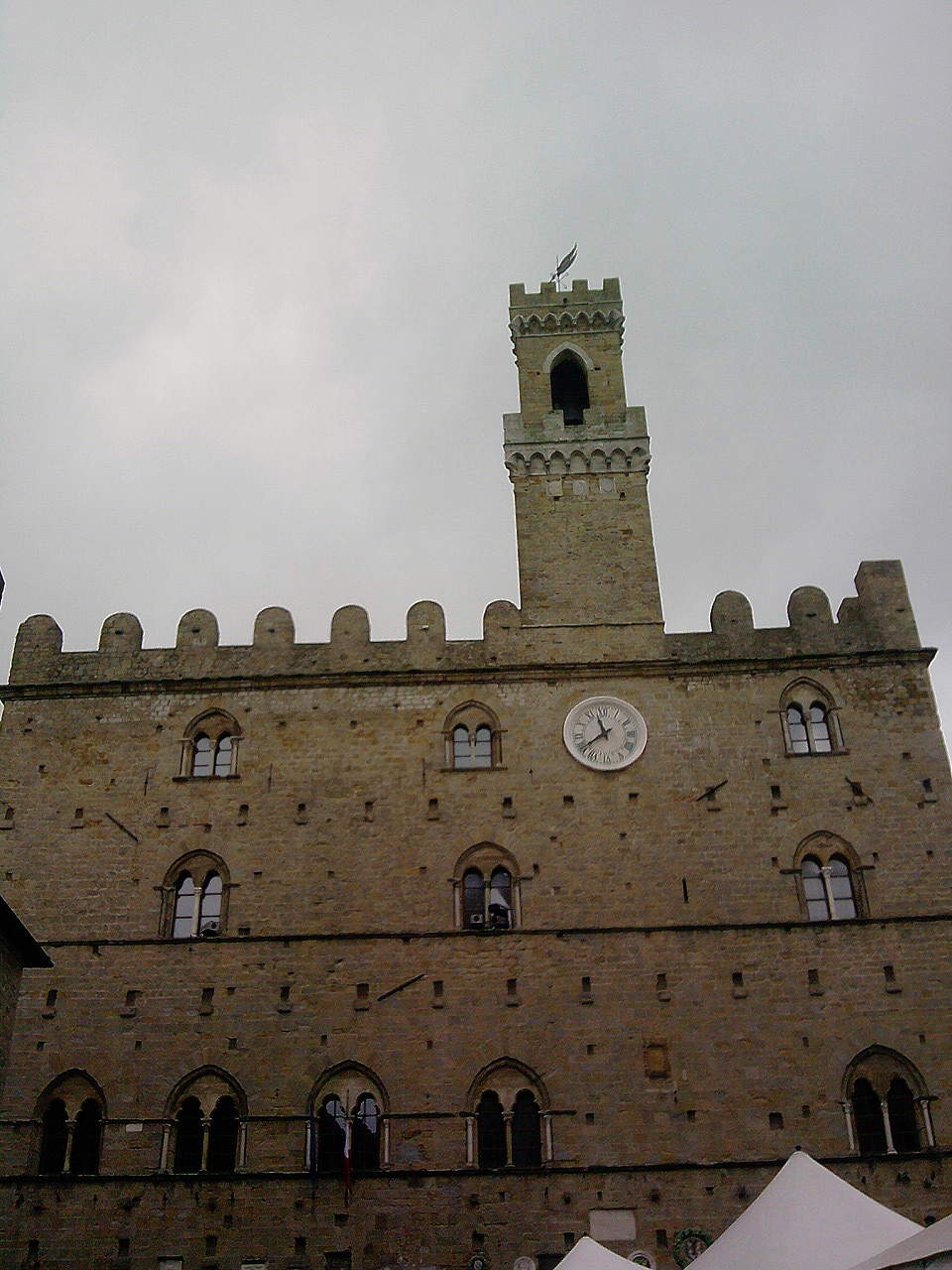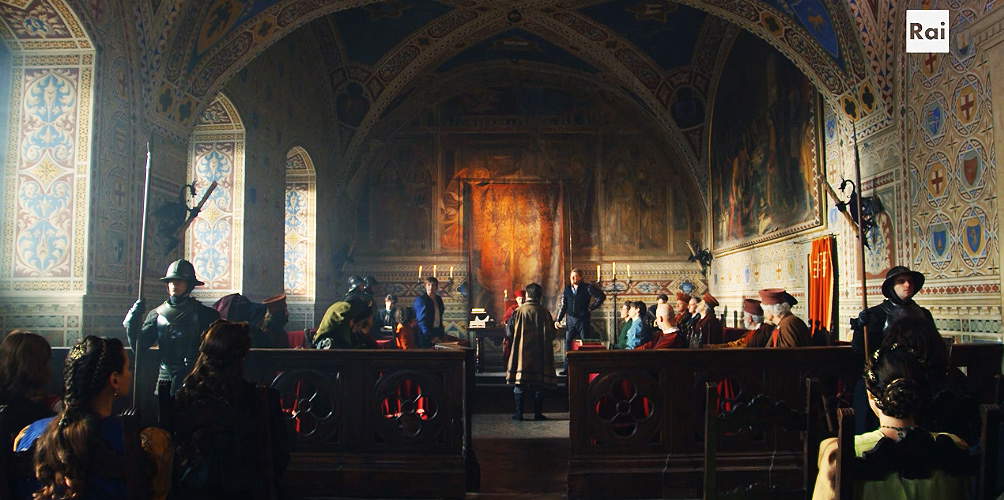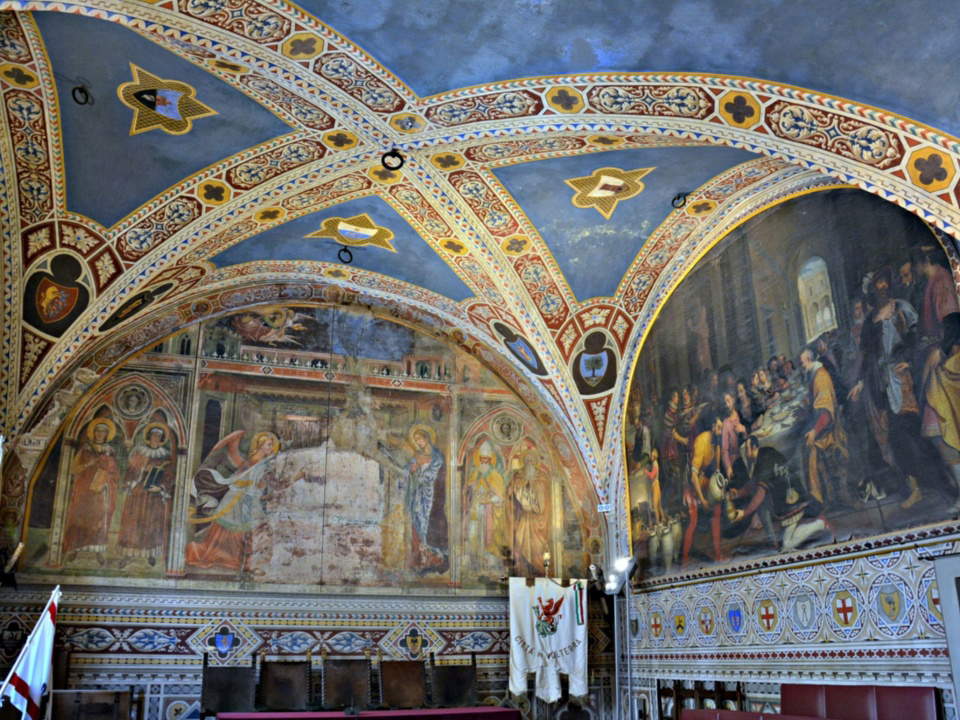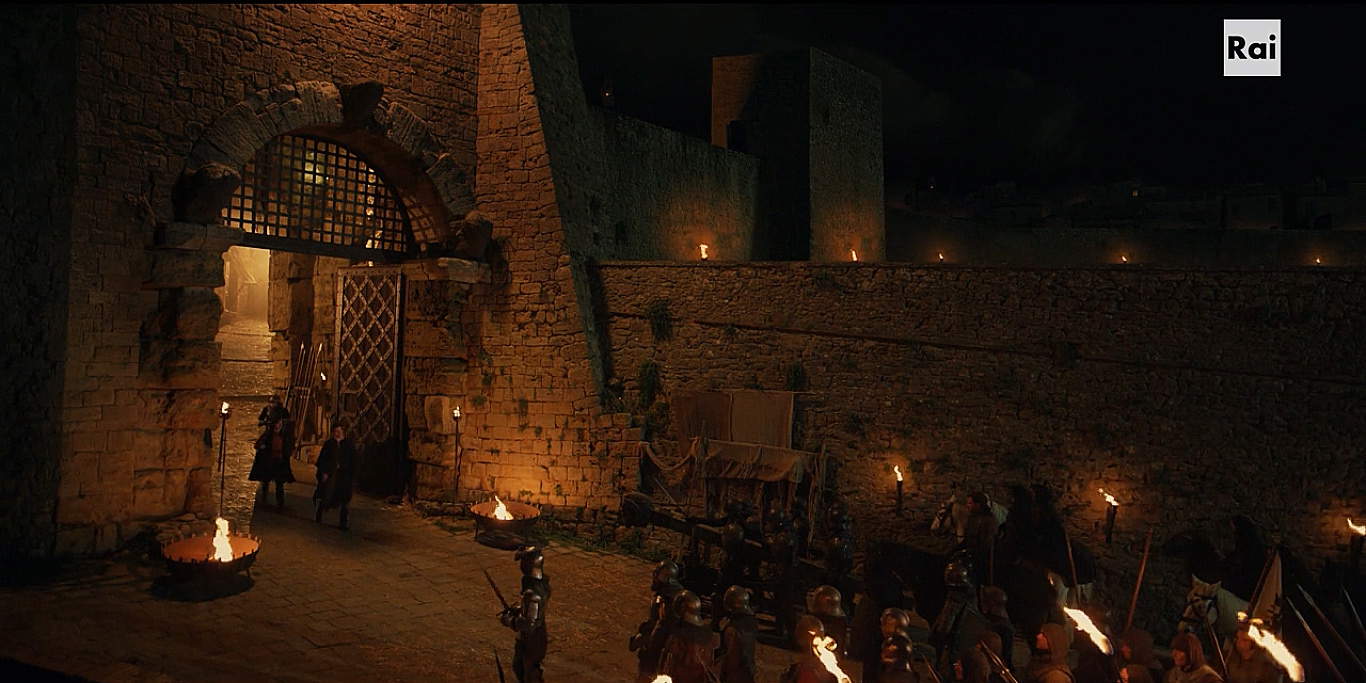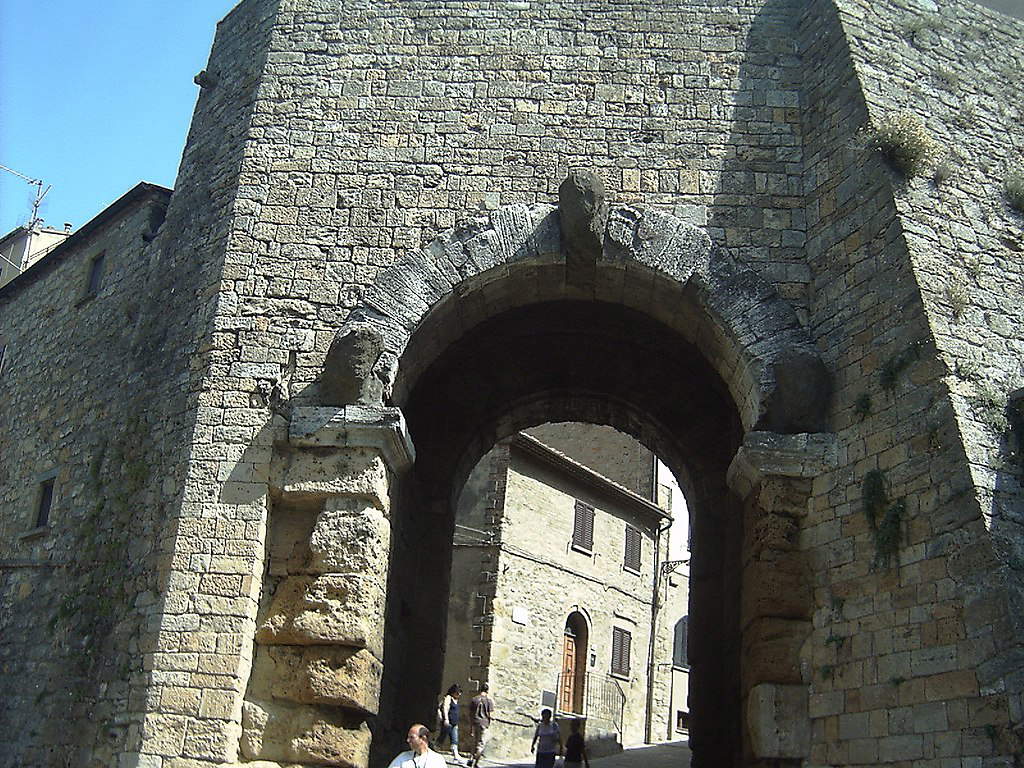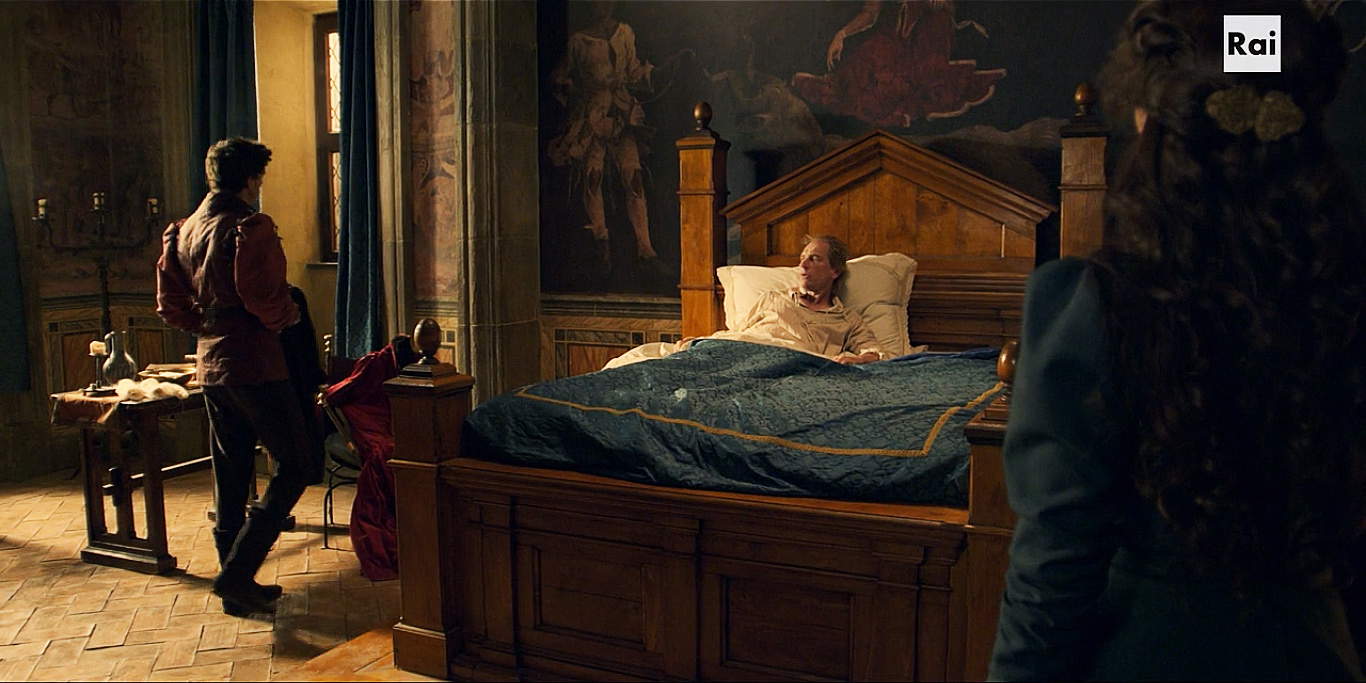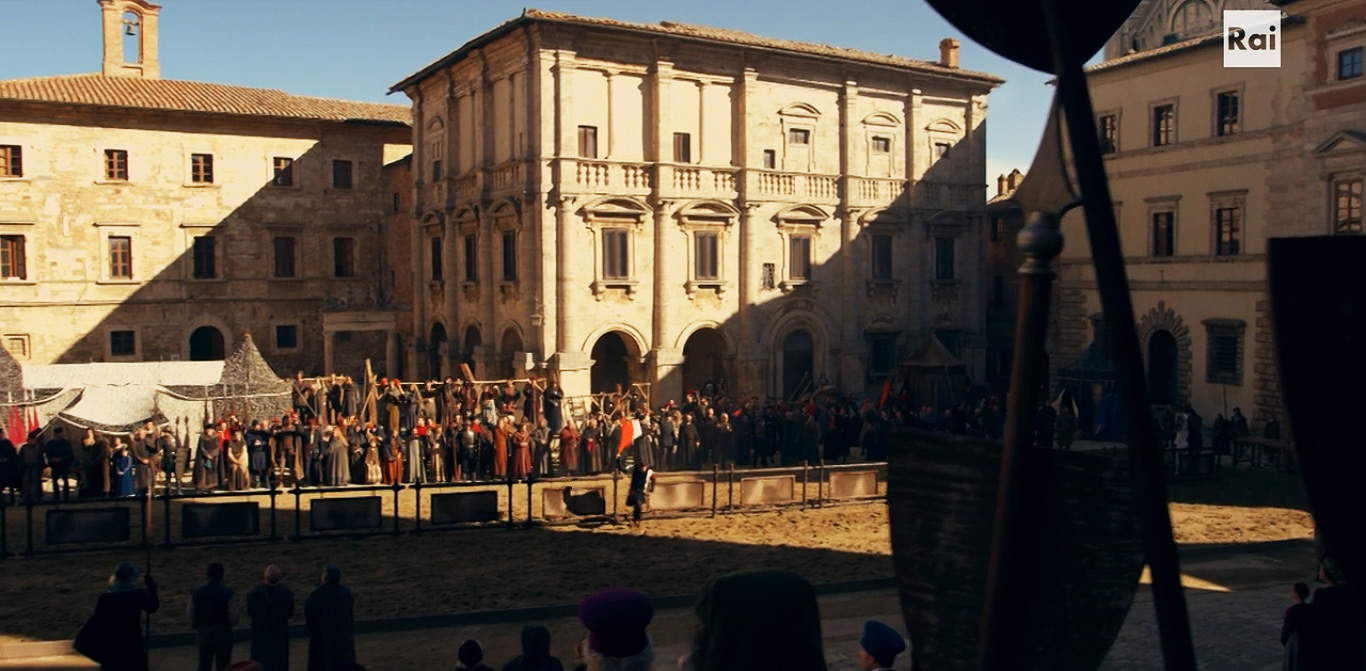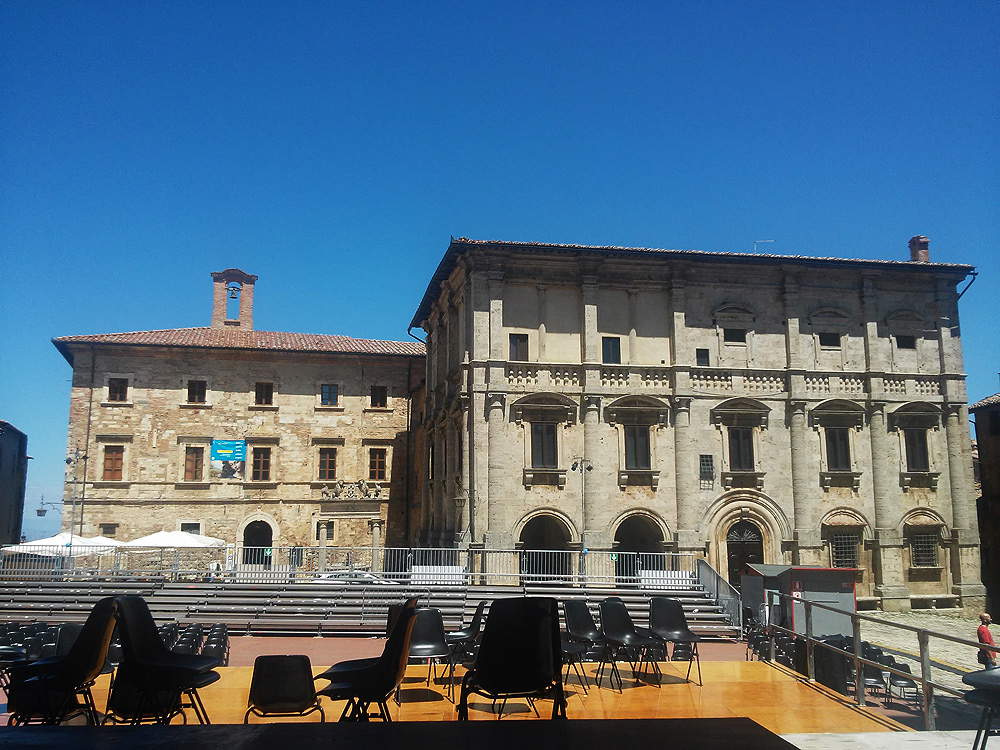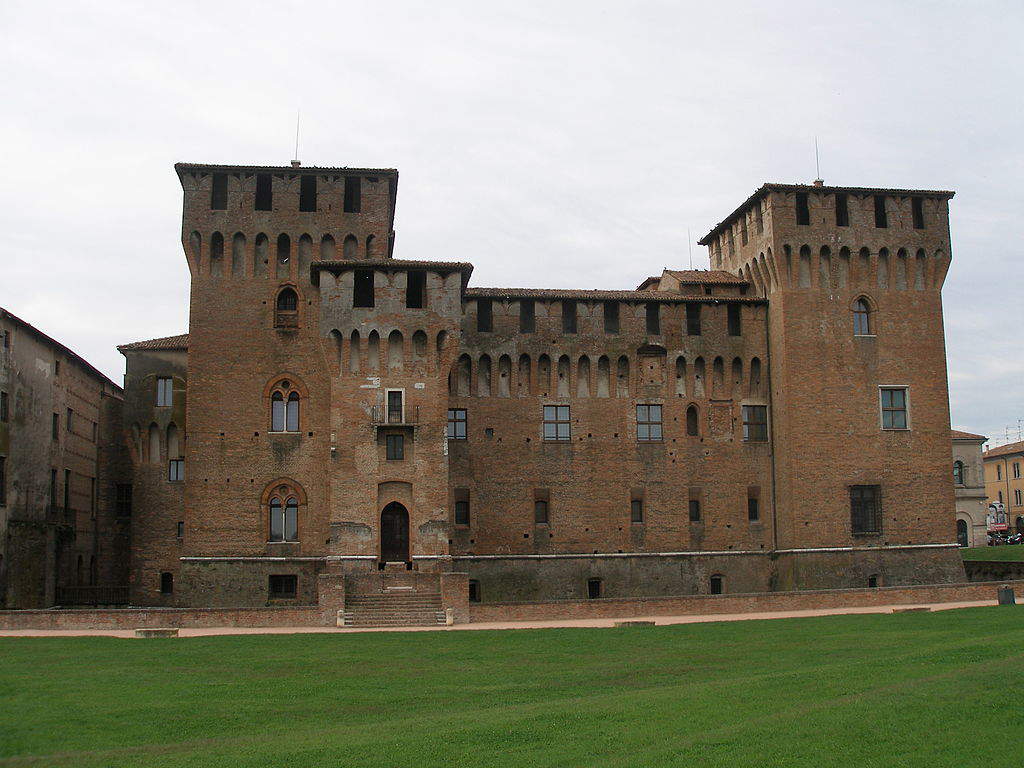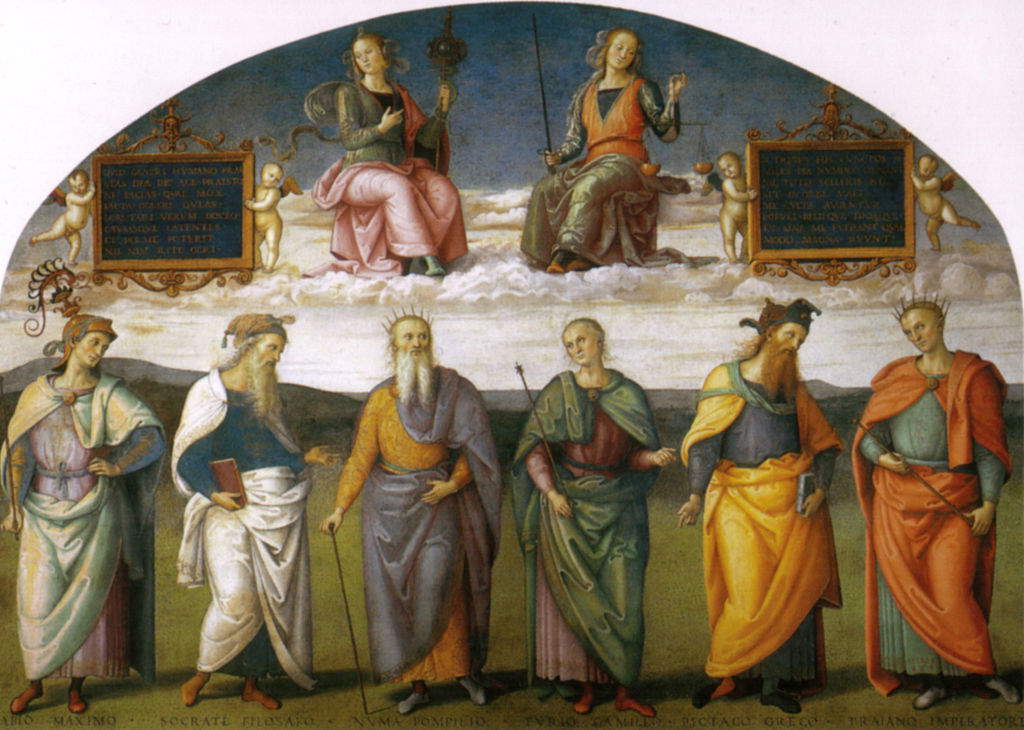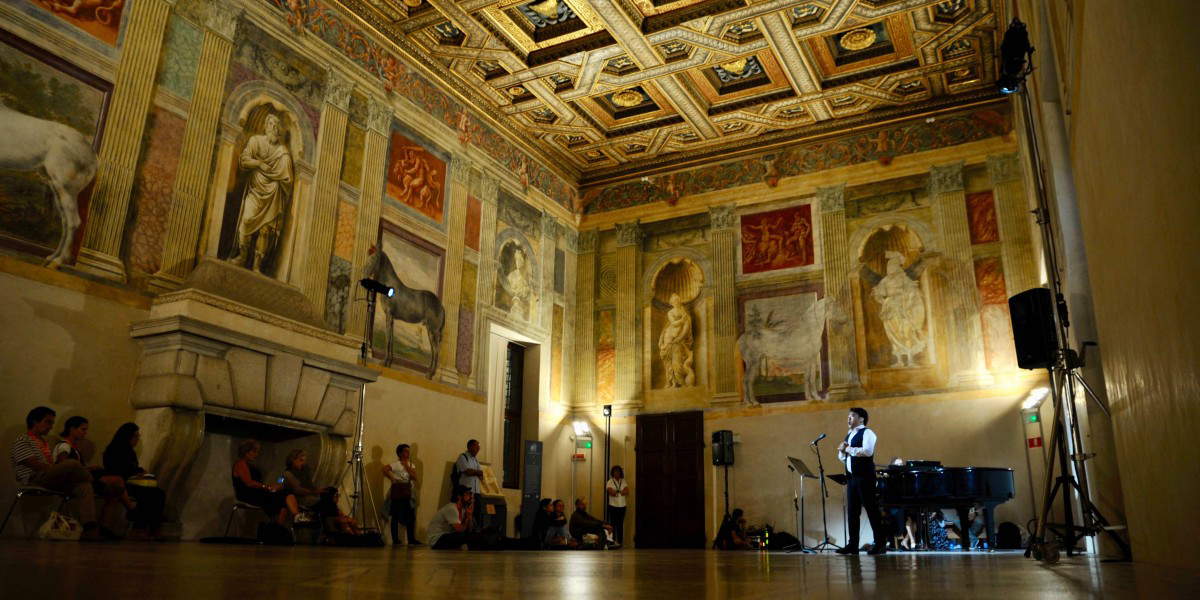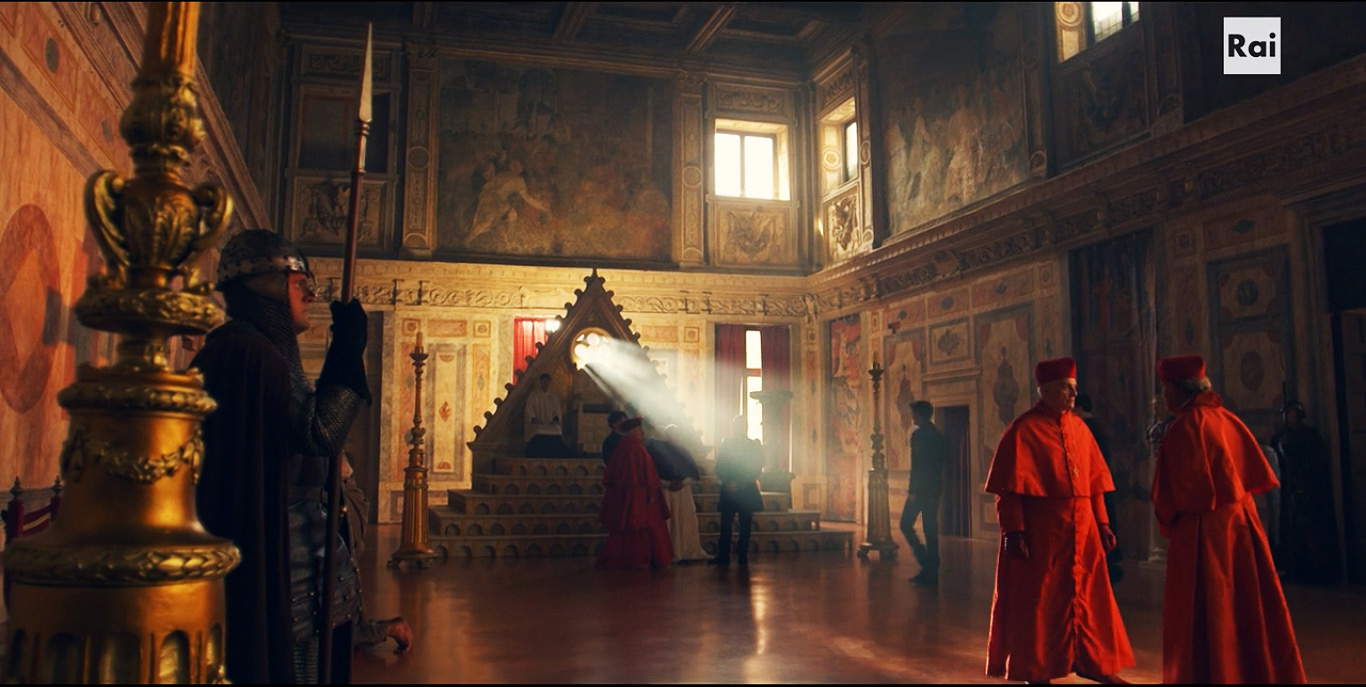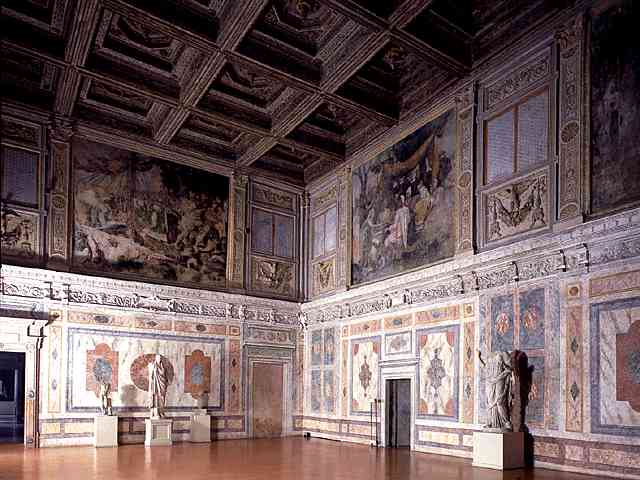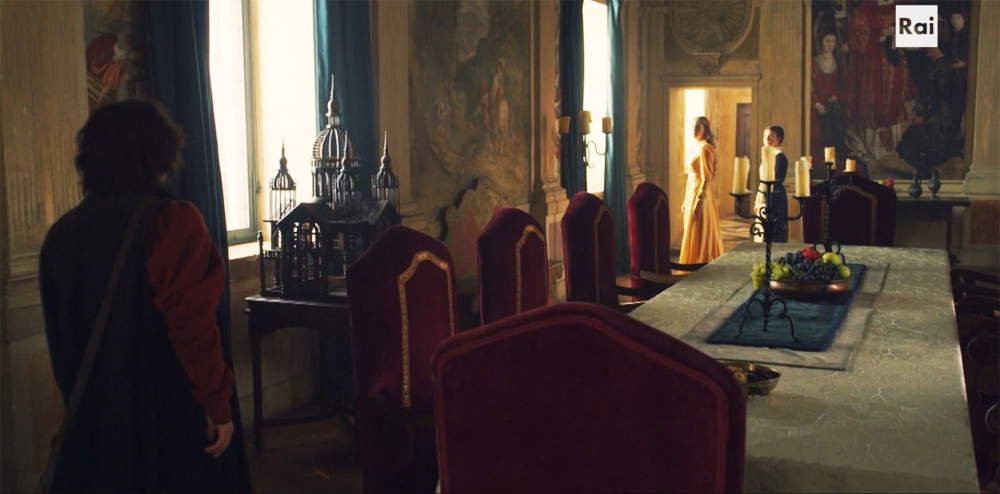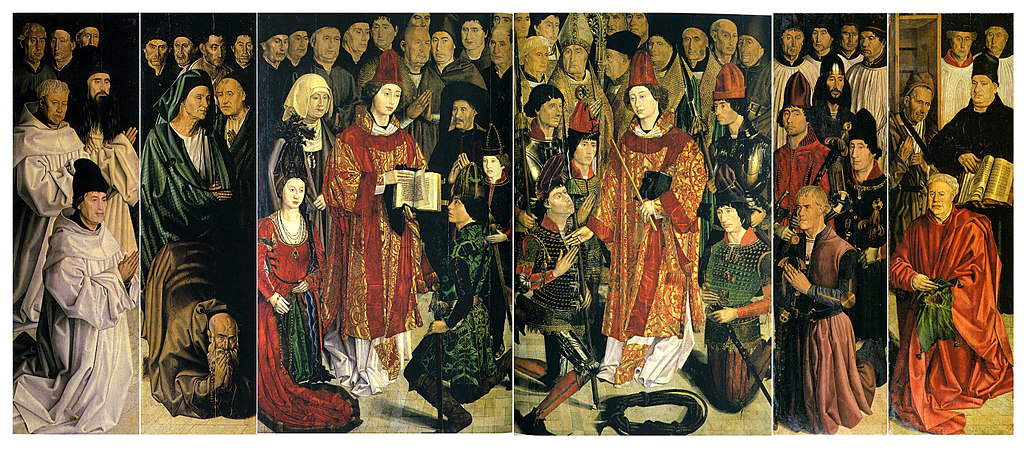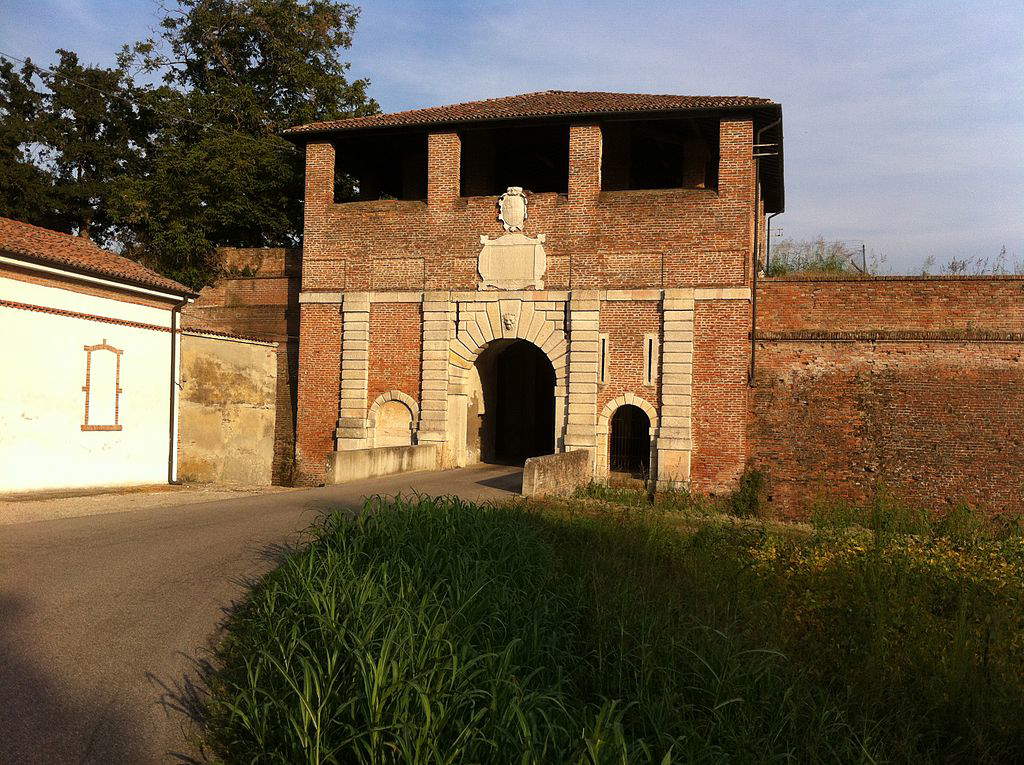by Federico Giannini, Ilaria Baratta , published on 11/11/2018
Categories: Works and artists
- Quaderni di viaggio / Disclaimer
The second season of the drama 'The Medici' was filmed in several locations of Italian history and art. Let's see in this article what they are.
The second season of the TV series I Medici is enjoying great success, partly because it is helping to uncover or rediscover a good deal of Italy’s artistic heritage, since most of the scenes are set at Renaissance palaces and churches throughout Italy. Of course, many of the locations are actually fictitious and do not correspond to reality, which is why many of those who watched the first episodes of the series turned up their noses. However, there is also the point to be made that philological perfection is impossible, because many of the locations that were the scene of the events that inspired the series (and which are set between 1469, the year Lorenzo the Magnificent became de facto lord of Florence, and 1478, the year of the Pazzi conspiracy) no longer exist, or have been heavily remodeled over the centuries. Obviously the private rooms of the protagonists (where, for narrative needs of the fiction, much of the dialogue takes place) have not been preserved, and some places are no longer as they were in the mid-15th century. Take the example of the walls of Florence, most of which no longer exist today, and the rest of which have been incorporated into the modern city: it would have been impossible to film the arrival of the Duke of Milan at the gates of the city, so it was decided to move the scene to Volterra, where the ancient walls are much better preserved. Or the assassination of Galeazzo Maria Sforza itself, which took place in the church of Santo Stefano in Milan: this is a building that underwent heavy alterations in the 17th century, so it would have been totally incompatible with an episode from 1476, which is why the scene takes place inside the Rotonda di San Lorenzo in Mantua, a church that has preserved an ancient appearance more suited to the needs of the story.
Therefore, in this article we have collected fifteen settings from the second season of the series (which, moreover, is historically much more accurate and faithful than the first), proposing a frame of the episode with an indication of the historical place where the scene takes place (and which, of course, in fiction is never made explicit, except in rare cases, so as not to generate confusion in the viewer) and revealing what is, in reality, the place where the film was shot, complete with explanatory photography. Happy reading!
1. Fiction: the hall of the Medici Palace (Florence). Reality: the Hall of the Fountain at the Villa d’Este (Tivoli).
In the first episode of the fiction, a shot frames a room in the hypothetical Medici palace in Florence where Lorenzo the Magnificent (Florence, 1449 - Careggi, 1492), his brother Giuliano (Florence, 1453 - 1478), and the painter Sandro Botticelli (Alessandro Filipepi, Florence, 1445 - 1510), who, however, was not yet working for the Medici at the time of the events narrated in the series. The room in which the scene takes place is actually the Sala della Fontana at the Villa d’Este in Tivoli, which was frescoed almost a hundred years later (between 1565 and 1566). The villa itself was built beginning in the 1550s.
 |
| Fiction: the hall of the Medici Palace (Florence). |
|
|
 |
| Reality: the Hall of the Fountain at the Villa d’Este (Tivoli) |
|
|
2. Fiction: the facade of the Medici Palace (Florence). Reality: Palazzo Piccolomini (Pienza)
The exteriors of what was then the Medici residence, namely the present Palazzo Medici Riccardi in Florence, built in the 1360s by Cosimo the Elder (Florence, 1389 - Careggi, 1464) and further enriched with works of art by Lorenzo the Magnificent himself, in the fiction are actually the exteriors of Palazzo Piccolomini in Pienza, which dates back to the same period as Palazzo Medici Riccardi. Designed by Bernardo Rossellino (Settignano, 1409 - Florence, 1464) on behalf of Enea Silvio Piccolomini (Corsignano, 1405 - Ancona, 1464), who became Pope Pius II in 1458, Palazzo Piccolomini echoes one of Leon Battista Alberti’s masterpieces, Palazzo Rucellai in Florence (and some elements of Palazzo Rucellai inspired Palazzo Medici Riccardi itself).
 |
| Fiction: the facade of the Medici Palace (Florence) |
|
|
 |
| Reality: Palazzo Piccolomini (Pienza). Ph. Credit Finestre Sull’Arte |
|
|
3. Fiction: Palazzo Vecchio (Florence). Reality: Palazzo dei Priori (Volterra).
In the fiction, when the protagonists leave or enter the Palazzo Vecchio for the sessions of the Council of the Republic, what we see is actually the Palazzo dei Priori in Volterra, the oldest municipal palace in all of Tuscany (the building was already finished in the 1430s), although at the time of Lorenzo the Magnificent it must not have looked like how we see it today: in fact, its current appearance dates back to the sixteenth century, when the Palazzo dei Priori was remodeled to make it more similar to Florence’s very Palazzo Vecchio. The city now in the province of Pisa finally submitted to Florence in 1472, after a civil war, also fueled by the Medici’s sights on the alum mines discovered in those very years, and which ended with the sacking carried out by the Florentine army led by Federico da Montefeltro, which nearly destroyed Volterra: in the series these facts are recounted, albeit with some inaccuracies (Lorenzo is made out to be a sort of pacifist who tried in every way to avoid the sack of Volterra and who had to yield to the will of the Council instigated to war by Jacopo de’ Pazzi, but in fact it was he who arranged for an army to be sent to the city).
 |
| Fiction: Palazzo Vecchio (Florence) |
 |
| Reality: Palazzo dei Priori (Volterra) |
4. Fiction: the Hall of the Two Hundred in the Palazzo Vecchio (Florence). Reality: the Council Chamber of the Palazzo dei Priori (Volterra)
The scenes of the public discussions of the Council of the Republic of Florence (at the time of the events, in fact, the city’s form of government was still, de iure, that of a republic, even though de facto the Medici had by then already become the lords of Florence with Cosimo the Elder) were filmed not in the Hall of the Two Hundred in the Palazzo Vecchio (which, moreover, is used today as the hall of the Florence city council), but in the Council Chamber of the Palazzo dei Priori in Volterra: this is one of the main anachronisms in the series, because only theAnnunciation by Jacopo di Cione, painted in 1398, remains of the original frescoes, while the other frescoes in the room date from the late 19th century.
 |
| Fiction: the Hall of the Two Hundred in the Palazzo Vecchio (Florence) |
 |
| Reality: the Council Chamber of the Palazzo dei Priori (Volterra). Ph. credit: Visit Tuscany |
5. Fiction: the gates of Florence. Reality: the Gate of the Arch in Volterra.
In the first episode, the scene in which the army of Galeazzo Maria Sforza (Fermo, 1444 - Milan, 1476) prepares to enter Florence was actually filmed at the Porta dell’Arco of Volterra due to obvious problems of “survival”: the remaining portions of the walls of Florence are in fact now incorporated into the modern city, while in Volterra they still retain their ancient appearance. As for the scene, the historical events of the fiction were in this case definitely simplified: after the failed assassination attempt against Piero de’ Medici (Florence, 1416 - 1469), some of his internal enemies (Niccolò Soderini and Diotisalvi Neroni above all) went to Venice with the aim of raising the Serenissima against Florence, and a war ensued (which, however, did not touch Florence in any way, since the only clash between the Venetian and Florentine armies took place near Bologna) that was resolved almost immediately with a peace imposed by Pope Paul II. The role of the Duke of Milan was to support Piero de’ Medici by sending an army: however, while the armies were clashing far from Florence, Galeazzo Maria Sforza was quietly a guest of the Medici in the city (in the fiction, Florence seems instead on the brink of civil war, foiled only by the providential intervention of the young Magnifico).
 |
| Fiction: the gates of Florence |
 |
| Reality: the Gate of the Arch of Volterra |
6. Fiction: the room of Piero de’ Medici in the family palace (Florence). Reality: the fresco of the month of March in the Salone dei Mesi in Palazzo Schifanoia (Ferrara)
Among the main art-historical “frictions” is Piero de’ Medici’s room, a fictional room decorated with one of the frescoes in the Salone dei Mesi of Palazzo Schifanoia in Ferrara. In particular, it is the allegory of the month of March, painted between 1468 and 1470 by Francesco del Cossa (Ferrara, 1436 - Bologna, 1478), one of the main protagonists of the 15th-century Ferrara school. In the fiction, however, only the central part of the fresco is glimpsed, the one depicting the three “decans” of the month (the mysterious personifications of the decades, long studied by Aby Warburg) and the ram, symbol of the zodiac sign of the month.
 |
| Fiction: Piero de’ Medici’s room in the family palace (Florence). |
 |
| Reality: the fresco of the month of March in the Salone dei Mesi in Palazzo Schifanoia (Ferrara) |
7. Fiction: the Apostolic Palace (Rome). Reality: the Palace of the Popes (Viterbo)
Scenes featuring the exteriors of Rome’s Apostolic Palace were filmed at the Palace of the Popes in Viterbo: built in the 13th century by transforming the original bishop’s palace, it was the seat of the papacy from 1257 until 1281, by choice of Pope Alexander IV, who wanted to move the papal court to the Latium city because of the crisis between the Roman curia and the city’s wealthy bourgeoisie, which had become hostile to the pontiff. The splendid loggia for blessings, the most recognizable element of the Palace of the Popes and repeatedly framed in the episodes of the series, was built in 1267.
 |
| Fiction: the Apostolic Palace (Rome) |
 |
| Reality: the Palace of the Popes (Viterbo) |
8. Fiction: Piazza Santa Croce (Florence). Reality: Piazza Grande (Montepulciano)
Towards the end of the second episode, there is a joust on horseback in which the challenges between Giuliano de’ Medici and Guglielmo de’ Pazzi (which ends in a draw) and between Lorenzo the Magnificent and Francesco de’ Pazzi (won by Lorenzo) are played out. This is the tournament that actually took place on February 7, 1469, in Florence’s Piazza Santa Croce to celebrate the marriage of Lorenzo and Clarice Orsini, and which was actually won by Lorenzo the Magnificent, then in his twenties, and who, as in the fiction, fought for Lucrezia Donati (his lover, who was elected queen of the tournament for the occasion) and won a silver helmet as a prize. His victory was celebrated by Luigi Pulci (Florence, 1432 - Padua, 1484). However, there are many differences from the actual tournament: in the fiction, the setting is the Piazza Grande in Montepulciano (Palazzo Nobili-Tarugi and the Palazzo del Capitano are recognizable) and, as mentioned, Giuliano (actually far from Florence) also participates. Instead, the Pazzi brothers actually took part, but we do not know if they had a chance to clash with Lorenzo.
 |
| Fiction: piazza Santa Croce (Florence) |
 |
| Reality: Piazza Grande (Montepulciano) |
9. Fiction: the skyline of Milan. Reality: Imperial Gate (Sabbioneta) and Castle of San Giorgio (Mantua).
In one scene we see Lorenzo traveling to Milan to speak with Duke Galeazzo Maria Sforza. For obvious reasons it was not possible to set the scene in the capital of Lombardy, since it has changed profoundly since the 15th century, and so a pastiche was made that, in one scene, shows the Imperial Gate of Sabbioneta (another anachronism since it was built in 1579) and the Castle of San Giorgio, which is located in Mantua and was the seat of the Gonzaga family at the time.
 |
| Fiction: the skyline of Milan |
 |
| Reality: Imperial Gate (Sabbioneta) and Castle of San Giorgio (Mantua). Ph. Credit Klaus Graf |
10. Fiction: the bedroom of Lorenzo the Magnificent (Florence). Reality: the fresco of the six ancient sages in the Collegio del Cambio (Perugia).
As with Piero de’ Medici’s bedroom, that of the Magnifico is also the result of assemblages: the frescoes seen behind the protagonists are not in Florence but in Perugia, and what is more in a public space, namely the Collegio del Cambio, at the time the seat of the Umbrian city’s money changers, who met here. The fresco is the one depicting the “six ancient sages,” is located in the Sala delle Udienze and is one of the masterpieces of Perugino (Pietro Vannucci, Città della Pieve, c. 1448 - Fontignano, 1523), who painted it in the late 15th century, between 1496 and 1500.
 |
| Fiction: the bedroom of Lorenzo the Magnificent (Florence) |
 |
| Reality: the fresco of the six ancient sages in the Collegio del Cambio (Perugia) |
11. Fiction: the Castello Sforzesco (Milan). Reality: Palazzo Te (Mantua)
All the scenes recounting the Milanese court (Giuliano and Lorenzo’s missions from Galeazzo Maria Sforza, the marriage of the duke’s illegitimate daughter Caterina Sforza to Girolamo Riario when she was ten and he was thirty, and many others) were filmed at Palazzo Te. In the scene where we see Caterina Sforza’s wedding banquet, the Hall of Horses, frescoed by Giulio Romano (Rome, c. 1499 - Mantua, 1546) between 1527 and 1528, is very recognizable.
 |
|
|
 |
|
|
12. Fiction: the church of Santo Stefano (Milan). Reality: the Rotunda of San Lorenzo (Mantua).
Galeazzo Maria Sforza was assassinated in Milan on December 26, 1476, by three Milanese nobles, Giovanni Andrea Lampugnani, Girolamo Olgiati, and Carlo Visconti (the former immediately killed by the duke’s escort, the others captured shortly after), who were opposed to the duke’s despotic rule and animated by the desire to overthrow the Sforza lordship. In the fiction, doubt is stirred in the viewer that Jacopo de’ Pazzi was behind the conspiracy, who in reality was totally uninvolved in the affair (if anything, some historians speculate that the Pazzi must have plotted to kill the Medici after the news of Duke Sforza’s assassination). Moreover, in reality, when he was assassinated, the duke was about to attend a mass and was accompanied by his retinue (as well as his escort), whereas in the fiction he enters the ambush site alone. The latter in reality was the basilica of Santo Stefano in Milan, which could not, however, be used for the TV series because it was heavily remodeled in later centuries: the scene was thus shot inside the Rotonda di San Lorenzo in Mantua, a church built in the 11th century that still retains its Romanesque appearance. The exterior of the Mantuan building is also seen in some scenes.
 |
| Fiction: the church of Santo Stefano (Milan) |
 |
| Reality: the Rotunda of San Lorenzo (Mantua) |
13. Fiction: the pope’s throne room (Rome). Reality: the Hall of Manto in the Ducal Palace (Mantua).
The scene in which Sixtus IV, born Francesco della Rovere (Pecorile di Celle Ligure, 1414 - Rome, 1484), is crowned pope, and others that take place in the same setting, were filmed in the Sala di Manto at the Ducal Palace in Mantua. Another anachronism, as the Sala di Manto was decorated in fresco only between 1538 and 1539, by Giulio Romano’s workshop.
 |
| Fiction: the pope’s throne room (Rome). |
 |
| Reality: the Sala di Manto in the Ducal Palace (Mantua) |
14. Fiction: the palace of the Vespucci family (Florence). Reality: the triptych of St. Vincent by Nuño Gonçalves (Lisbon)
One of the “strangest” presences in the entire fiction is the one we encounter in what, in the series, is the Palazzo dei Vespucci, where the meeting between Sandro Botticelli and Simonetta Vespucci (Genoa or Portovenere, 1453 - Florence, 1476) takes place and where the clash between her husband, Marco Vespucci, and Giuliano de’ Medici takes place. In the fiction, the salon is decorated in the center with what is actually the central panel of the triptych of St. Vincent by the Portuguese painter Nuño Gonçalves (news from 1450 to 1467), mentioned in sources in the 16th century and yet rediscovered only in 1880 (today it is kept at the Museu Nacional de Arte Antiga in Lisbon). Perhaps, the presence of an “exotic” painting is meant to recall the fact that the Vespucci family was very active in trade with distant lands.
 |
| Fiction: the palace of the Vespucci family (Florence) |
 |
| Reality: the triptych of St. Vincent by Nuño Gonçalves (Lisbon) |
15. Fiction: Porta Nuova (Pisa). Reality: Porta Vittoria (Sabbioneta).
In the scene in which Cardinal Francesco Salviati (Florence, 1443 - 1478), among the main antagonists of the fiction and actually in reality one of the major animators of the Pazzi conspiracy, travels to Pisa to obtain the chair of archbishop, we see what is supposed to be the Porta Nuova of Pisa, that is, the one that guarantees the entrance to the Piazza dei Miracoli. Actually, the city of Pisa has been rendered with a skyline of the famous square, combined with the Porta Vittoria of Sabbioneta, built in 1562, so again almost a hundred years after the events narrated in the fiction.
 |
| Fiction: Porta Nuova (Pisa) |
 |
| Reality: Porta Vittoria (Sabbioneta). Ph. Credit Egidio Paini |
Warning: the translation into English of the original Italian article was created using automatic tools.
We undertake to review all articles, but we do not guarantee the total absence of inaccuracies in the translation due to the program. You can
find the original by clicking on the ITA button. If you find any mistake,please contact us.

